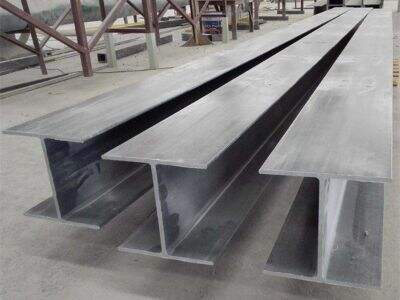CQDJ laetatur vobis duos materiales, qui in concreto utuntur, offerre: fibram vitream et ferrobeton. Ambae istae materiae magnum officium in conficiendo concrete forti et stabili praestant. Sed melior electio pro aedificiis? Iungi me dum hunc argumentum explicamus.
Maxime proficiendo ex concreto per usum fibrae vitreae
Fibra vitrea est materialis unicus qui constat ex filis tenuissimis vitreis. Istae fibrae sunt valde fortes, et fibra vitrea est levis pondere, quod eam facile tractari facit. Fibra vitrea mixta in concreto maiorem vim et fidem in concreto praebet. Id significat edificia et structuras longiorem vitam habere posse et majorem pressionem sustinere.
Unus magnus commodus fibrae vitreae est quod non rubefaciet. Rubefactio est magna difficultas saepe ferri, quod cum concreto utitur. Cum rubor in ferrum incidit, hoc tempore comminuitur. Hoc potest causare fissuras et fracturas in concreto, male pro salute et longa vita aedificii. Quoniam Fiberglass non rubet, et potest contribuere ad conservandum ut concretum maneat in optima conditione per multos annos.
Fiberglass etiam habet praemium quod est valde facile ad operandum. Fiberglass est levis pondere, permitte operaris facile tollere et movere eam. Praeterea, possunt eam incidere et formare in varias magnitudines et formas. Hoc est maxime utile in locis angustis vel incommodis ubi fortificatio ferrea forte male conveniat. Fiberglass potest adhiberi ad roborandum concretum in areis quae alioqui difficile sint accessus.
Controversia inter Fiberglass et Rebar in Designatione Concreti
Quamquam Fiberglass multa sua praemia habet, aliqui contentionem exprimunt an eius usus sit alternativa congruens. Virgae roborantes, seu rebar, sunt materia valde late adhibita ad roborandum concretum. Diu fuerunt a multis aedificatoribus usatae et fidatae ad sustentandas structuras. Fiberglass Ferramentum structionis replacement is an appropriate alternative. Reinforcing bar, or rebar, is a very widely used material for strengthening concrete. For a long time, it has been used and trusted by many builders to hold up structures.
Una sollicitudo quam aliqui homines de fibra glasse habent est quod ea non est tam diu in usu quam ferrum. Id significat quod non fuit tantum investigatio aut experientia de fibra glasse in constructione concreti. Proinde, aliqui aedificatores possunt esse restii fibram glasse eligere propter fRP ferramentum structionis cum familiaritatem cum producto bene examinato posse esse alluritivum.
Unum argumentum ulterius contra fibram glasse est quod, secundum quosdam peritos, fortassis non habet vim tractionis reinforcementis ferreae. Etiam cum fibra glassa sit tam mirabiliter fortis et satis resistens ad multas applicationes, sunt qui credunt eam non posse tantam pressionem sustinere quantum ferrum. Hoc locum relinquit quaestionis an fibra glassa vere sit optima electio pro qualibet situatu constructionis.
Reinforcement Fibrae Glasse in Concreto ad Achievandum Constructionem Sustinibilem
Fibra de vidrio ha recibido una mala reputación, pero por varias razones, podría ser el futuro de la construcción en concreto. Una razón principal es la sostenibilidad. La fibra de vidrio se produce a partir de vidrio reciclado, lo que la hace mejor para el medio ambiente. Para proteger nuestro planeta, es esencial utilizar materiales que ayuden a reducir los desechos.
La fibra de vidrio también es muy flexible y ligera. Esta versatilidad permite que se utilice en estructuras que deben resistir desastres naturales. Por esta razón, el refuerzo con fibra de vidrio puede ser particularmente útil para propiedades ubicadas en áreas con altos niveles de actividad sísmica o que experimentan huracanes, por ejemplo. Ayuda a mantener estas estructuras en pie y seguras durante eventos climáticos extremos.
El Futuro del Concreto: ¿Por Qué el Refuerzo con Fibra de Vidrio?
Ecce aliqua ex rationibus cur fibra glassia est aliquid ad considerandum pro reinforcement ultra eius amicitiam cum natura et resilentiam adversus disastrosa. Fibra glassia solet esse simplicior ad instalandum quam steel reinforcement. Esse facilius ad utendum iuvat tempus et pecuniam in projectis constructionis per methodos celeriores et minus laboriosas ad operandum.
Fibra glassia item habet importantem proprietatem non conductivam. Itaque, non conducit electricitatem, faciens eam optionem tutam pro reinforcement concreti in locis ubi securitas electrica est sollicitudo. Fibra glassia fit usque ad materiales quae sunt incomburibiles, et hoc eos reddit valde aptos pro aedificiis quae requirunt atmosphaeram securitatis pro hominibus qui patiuntur a morbis, ita hospitia, et scholae, et similia possunt multum uti fibra glassia.
Reinforcement Concreti — Optima Vires?
Fibra de vidrio vs. varillas de refuerzo: ¿Qué es mejor para reforzar el concreto? No es exactamente una pregunta simple. Todo depende del proyecto específico y de lo que la estructura requiera. La fibra de vidrio y las varillas han demostrado ser efectivas en fortalecer el concreto, y ambas tienen sus propios conjuntos de ventajas.
Con la tecnología avanzando y más personas buscando ser ecológicas, podríamos esperar que la fibra de vidrio sea vista con más frecuencia en proyectos de construcción. La fibra de vidrio podría tener un futuro brillante por delante en la construcción de concreto, cree CQDJ.
Table of Contents
- Maxime proficiendo ex concreto per usum fibrae vitreae
- Controversia inter Fiberglass et Rebar in Designatione Concreti
- Reinforcement Fibrae Glasse in Concreto ad Achievandum Constructionem Sustinibilem
- El Futuro del Concreto: ¿Por Qué el Refuerzo con Fibra de Vidrio?
- Reinforcement Concreti — Optima Vires?

